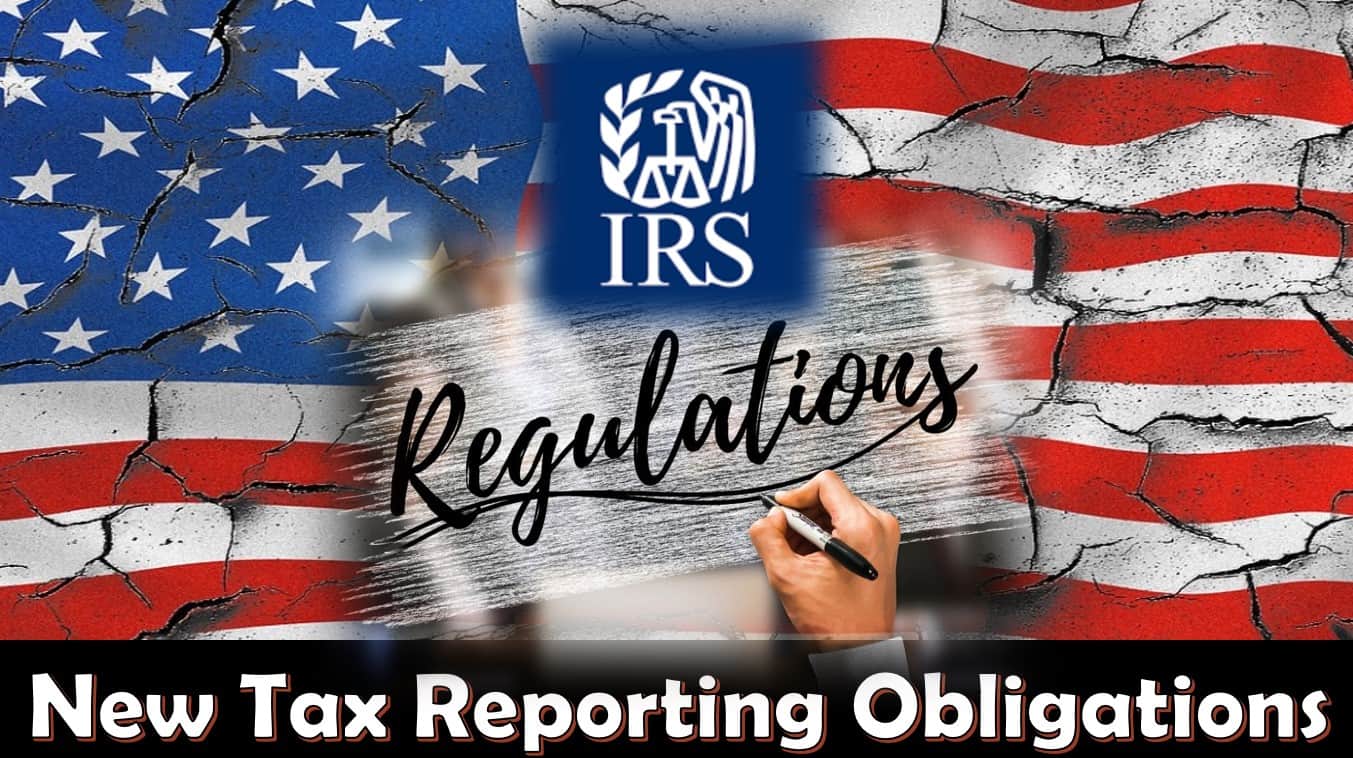
CBDC: A Guide To Grasping Central Bank Digital Currency
Last updated on June 8th, 2023 at 02:41 pm
Some people believe that CBDCs, or Central Bank Digital Currencies, are the future of money. Frankly, whether they are or are not is very much up for debate.
However, they may have a valid argument given the speed at which the world is becoming increasingly digital.
But what exactly are CBDCs, and how will they change the way we use and think about money?
CBDCs, or Central Bank Digital Currencies, are a form of digital currency that is issued and backed by a central bank. Unlike traditional fiat currency that is physical cash, CBDCs exist purely in digital form and are designed to mimic the functions of cash. CBDCs are digitally secure and are intended to reduce the costs and disruptions associated with traditional payment systems. Types of CBDCs being developed include Retail CBDCs, which can be used directly by the public, and Wholesale CBDCs, which are intended for use between financial institutions.
There is certainly a lot of information there to unpack so, put on your thinking caps and get ready to enter this fascinating, often perplexing world of CBDCs.
Moving forward I will attempt to unravel the realm of CBDCs.
As you read on, you’ll discover what CBDCs are, how they work, and what they could mean for the financial landscape.
CBDC Guide
- What Are CBDCs?
- Advantages & Disadvantages of CBDCs
- Why Governments Are Interested in CBDCs
- Adoption Hurdles Facing CBDCs
- CBDC vs Cash
- CBDC vs Cryptocurrency
- How To Prepare For a CBDC
- CBDC Confluence
- Frequently Asked Questions (FAQ)
What Are CBDCs?
The easiest way to wrap your head around what a CBDC is, is to imagine it as a completely digital form of a fiat currency.
Now, that being said, the abilities and uses for CBDCs go far beyond those of the physical forms of fiat currency issued by a country’s Central Bank.
Those central banks currently developing or utilizing a CBDC state that these digital currencies provide innovative solutions for financial services like faster payments, lower fees, enhanced security measures, privacy protection, improved financial inclusion, and more.
As we will discuss later, the degree to which these solutions are true varies greatly, as does their validity.
Generally speaking, CBDCs use blockchain technology as the basis for their operations, allowing them to be managed more securely and transparently than fiat currencies.
For those CBDCs that do utilize blockchain technology, it is centralized. This makes it the antithesis of cryptocurrency, which is generally decentralized by design.
I will discuss this more later.
Proponents of CBDCs say that this technology promises to bring about an era of innovative ideas, and products, that could revolutionize how we manage our finances in the future.
As I will discuss in greater detail further on in this article, the rise of CBDCs is gaining traction as more countries and governments around the world explore their potential benefits and uses. Many have already launched pilot programs, or have started to implement actual projects.
Though not the first to launch a CBDC, China appears to be leading the way in this regard, having launched its Digital Currency Electronic Payment (DCEP) initiative in 2020. This development culminated with the roll-out of their CBDC at the 2022 Winter Olympics which were held in that country.
Clearly, the potential of CBDCs is huge, and the possibilities they present are thrilling for some, and scary for others.
There is little doubt that digital currencies like CBDCs will revolutionize the financial landscape. CBDC will do this in two main areas.
Two Main Types of CBDCs
As with most things in the current banking system, there are one set of rules for us, and one set of rules for them.
If I may be so bold, this is part of the reason that the banking system is in distress and collapsing across the globe… but I digress…
This can easily be seen in the development of CBDCs.
There are two main types of CBDCs, retail and wholesale.
Let’s dive into both a bit deeper…
Retail CBDC
Retail CBDCs, as the name implies, are designed to be utilized by end users, either consumers or businesses, for everyday purchases such as buying groceries, paying bills, and so on.
This type of digital currency is issued by a Central Bank and when people talk about CBDCs, it is the one most people are familiar with. These digital assets are made directly accessible to the public, and are the ones that will be used to govern the average person like you and I. We can see this happening already with CBDC in China.
Wholesale CBDC
Wholesale CBDCs, on the other hand, are designed for use by banks and large financial institutions in order to facilitate payments between each other.
Wholesale CBDCs are not directly accessible to the public. That means that transactions made with these would be conducted behind closed doors. Meaning that end users (you and I), would never interact with them directly.
Apart from these two broad categories, there are further CBDC subdivisions to discuss.
Token Based CBDC
Token-based CBDCs use distributed ledger technology (DLT) like blockchain to enable the transfer of digital tokens representing different assets or services.
Users would need to use a currency wallet, similar to a cryptocurrency wallet to conduct transactions. Furthermore, this type of CBDC represents a claim on the Central Bank.
Account Based CBDC
Account-based CBDCs are similar in design to traditional banking systems, where users have an account that can be credited and debited. Though these accounts, as well as their control, may be completed via local or regional banks, these CBDCs are backed by a Central Bank.
Users will have control of their accounts, and account holders would be able to transact with one another using this new form of digital money.
Hybrid CBDC
Hybrid CBDCs combine both token-based and account-based systems, allowing for quick and secure transactions between multiple parties.
This type of CBDC is seen as more flexible when compared to either token or account-based systems, and is more suitable for use in a variety of different scenarios.
Overall, CBDCs offer the potential to revolutionize the way we handle money on both a personal and global scale. With more countries getting onboard with their own CBDC projects, it’s clear that this new era of digital currency is upon us.
But, at the end of the day, do the potential benefits outweigh the drawbacks?
Advantages & Disadvantages of CBDCs
| Advantages | Disadvantages |
|---|---|
| Increased Transaction Speed & Efficiency | Loss of Privacy |
| Reduced Costs to Banks | Centralization |
| Potential Financial Inclusion (Both) | Potential Financial Exclusion (Both) |
| Portability | Requires Permission to Use |
| Scalability | Programmability |
| 24-7 Access | Increased Need For Cybersecurity |
| Potential Legal & Regulatory Issues | |
| Discourages Savings & Investments | |
| Requires Digital Wallet | |
| Banking System Disruptions | |
| Necessary Learning Curve |
As with most things in life, CBDCs have many advantages, but they also comes with a few drawbacks.
On the plus side, a CBDC could open up new opportunities for faster payments, more efficient banking services, and greater financial inclusion (although that one is up for debate).
With this in mind, the positive aspect of this could be that CBDCs would be particularly beneficial to those living in developing countries, or areas where access to traditional banking services is limited.
The potential debate on this comes into play because CBDCs are completely programmable. So, they could be programmed to exclude anyone from being able to access the currency itself, as well as the services it provides.
To continue with the potential downsides, a CBDC may lead to increased government control over the money supply. This could make it more difficult for citizens to store, transfer, or use their money without the government’s permission.
Furthermore, the government will inevitably claim that they must track every transaction conducted with their CBDC… for our safety of course… can you say “Goodbye Privacy?”
Not to mention it would create new risks in the financial system, such as cyber security and fraud.
Ultimately, the decision to adopt a CBDC should be made on a case-by-case basis, and with careful consideration of all its pros and cons. As such, governments and financial institutions should proceed cautiously before making any decisions about its implementation.
If implementing this type of digital currency could create more problems than it solves, why would a government even consider it?
Why Governments Are Interested in CBDCs
Have you ever heard this quote:
“You can never really know what goes on in someone else’s heart”
I tried looking this up, because I was unable to remember where I heard or read it… however, the only reference to this quote I could find was from a BBC series called Broadchurch… I never even watched that show…
Regardless, the quote is apt for our discussion here.
Why would a government or Central Bank want to create and force it’s citizens to use a CBDC?
Frankly, I can’t think of any good reasons to force people to use it… but I can certainly think of plenty of bad ones…
I’ll try to remain as objective as possible here… even though you can probably already tell I am opposed to CBDCs.
I would like to believe that Central banks and governments are interested in CBDCs because of their potential to revolutionize the way money is used.
I mean, how can you argue with instant payments… especially when you compare it to the archaic system we are sill struggling with today.
How can you argue with reducing fraud… especially when all the major banks are fined millions of dollars constantly for fraudulent and deceptive practices… oh yea, let’s not forget money laundering.
And with over 1.4 billion people across the globe being unbanked, who can scoff at improving financial inclusion.
Wait… I have one more…
When the Pentagon can’t pass a financial audit… who doesn’t want a way for the government to better manage their money supply.
Of course, no one is sure exactly how any government would use it, so I guess the jury is still out.
But if implemented correctly and fairly, CBDCs could offer numerous benefits to both individuals and institutions alike.
To this end, let’s take a look at some of the problems a CBDC is meant to solve.
Issues a CBDC is Meant To Address
In case you haven’t noticed, the current financial system is plagued by issues…
I know, I know… that’s difficult to believe, it’s not like you’ve ever noticed any…
OK… enough sarcasm… for now…
Anyway, some of these virtually nonexistent issues include high transaction fees, lengthy processing times, lack of privacy and security, geographical restrictions, inaccessibility to unbanked people, and manipulation of the monetary supply.
These are the problems a Central Bank Digital Currency can address if implemented correctly.
Thanks to its ability to process payments almost instantaneously, users of a CBDC would no longer need to wait days, and pay high fees for international transfers.
Moreover, the distributed ledger technology (DLT) used in most CBDCs could offer greater security and privacy protection than traditional paper-based money systems.
If everyone had access to an efficient and secure monetary system, financial inclusion could, in theory, become a reality for hundreds of millions of people.
Finally, the use of CBDCs should reduce manipulation and distortion of government policies.
However, with such power in the ability to program, and manipulate this new form of money, governments would definitely have more control and visibility over the money supply… which is great for the government, but not for its users!
According to their issuers, the implementation of a CBDC is an important step towards a more efficient and secure financial system.
But, let’s take a closer look at some ways things can go wrong when you consider that: “power tends to corrupt; absolute power corrupts absolutely.”
Financial Inclusion
One of the most prominent points from proponents of CBDCs is that this new asset class with help provide banking services to the billions of unbanked people across the globe.
Let’s be honest with ourselves, financial inclusion is something that we all should strive to achieve.
Ultimately, CBDCs could make it possible for billions of people, who have been excluded from the traditional financial system due to geography, poverty, or other factors, to finally be able to join the rest of the world economy.
But, when you leave this much power in the hands of only a few people, they inevitably co-opt it.
While it’s true that CBDCs could help provide banking services to the unbanked, it could also be used to further restrict others from accessing or entering the financial system.
Because of the programmable nature of CBDCs, governments could encode rules that limit access to CBDCs for certain individuals or groups. This inability to access, or use CBDCs, could lead to additional socio-economic disparities based on these factors.
As we’ve seen in recent years, people are censored and restricted from many things. Sometimes for simply believing a certain thing, or supporting a certain political philosophy.
So, it’s not a stretch to think that with a CBDC, people could quite literally be programmed to be outside of the system.
Therefore, it is important that those who develop and implement CBDCs keep in mind the potential for the misuse of this powerful asset class.
Innovations like this should never be used as a tool for discrimination or prejudice, but rather as a way to empower people who, for too long, have been excluded from the world’s financial system.
But the reasons why governments would want to embrace a CBDC go even further.
Replace Physical Cash
As the world continues to move towards a more digital economy, governments are increasingly looking for ways to replace physical cash. With the implementation of CBDCs, this could become a reality.
Cash is no longer seen as “king” in today’s economy.
As generational demographics change, there is a rise in the use of cashless options for payments.
The rise of cryptocurrencies and other digital assets has shown us that not only is it more convenient to use digital money, but also that there are a variety of advantages to using them.
Think about it… by using digital currency there’s no more having to worry about carrying around large amounts of cash, worrying if your money is safe or secure, or dealing with the hassle of exchanging currencies.
As with most things, for every convenience something provides there is often a downside.
A primary drawback to a CBDC is it’s much easier for governments to monitor the money supply when citizens use CBDCs rather than it can with cash.
And while this would seem to be a positive thing… and it does have positive aspects… the shortcomings, in my opinion, outweigh the possible gains.
CBDCs could provide the governments with a powerful tool for monitoring and controlling its citizens in ways that were not previously possible.
Of course, the government would tell us that this level of control and surveillance will be used to protect against criminal activities… but like most protections, they can be used for evil purposes against anyone.
As I’ve mentioned regarding the manipulation of social media, people and groups can be silenced, threatened, and coerced for many reasons.
With a CBDC, some of these possibilities that are opened up includes manipulating public opinion, or unfairly targeting certain individuals or groups.
In essence, CBDCs could give governments unprecedented levels of power to monitor their citizens and control the outcomes of not just their financial lives, but their actual lives, and the lives of their families and loved ones.
Yet, despite these fears, the potential for a more transparent and secure financial system is something that we all should strive to achieve. I would posit that the best form of this system would be a decentralized one.
In short, a CBDC could be the avenue to usher in a cashless society.
Want to explore more aspects of the move to a cashless society?
I took a deep dive into just this topic, check it out here.
To sum up, it is clear that there are many potential advantages and disadvantages of implementing a CBDC as part of the world’s financial infrastructure.
But there are additional hurdles for CBDCs to overcome before they can be adopted on a grand scale.
Adoption Hurdles Facing CBDCs
For CBDCs to become the standard for digital payments, they must first overcome a variety of hurdles.
From gaining acceptance from governments, users, and regulatory bodies to ensuring the security of users’ funds, there are many issues that need to be addressed before these new technologies can truly take off.
Thus, the transition to a cashless economy using CBDCs is a complex process. Stakeholders will have to work together in order to ensure that it operates smoothly and securely.
One thing is for certain, it is not something that will happen overnight. Let’s explore some of these hurdles in more depth.
Regulatory Hurdles
One of the biggest regulatory hurdles facing mass adoption of a CBDC is the legislative changes that need to happen in order to make these digital assets legal tender. Furthermore, governments need to consider the implications of such a move.
Currently in the United States, the legal framework for making a CBDC legal tender is lacking. So, attempting to make this change will require adjustments in existing laws and regulations around money and markets.
And of course, due to the potential for this type of currency to invade personal privacy, and be utilized as a method of control over users, governments would have to create safeguards and protocols to ensure the integrity of the currency.
Additional regulatory concerns for legislators include how to prevent money laundering, terrorist financing, and other criminal activities, not to mention considering the best way to tax any transactions made with a CBDC.
These are just a few of the regulatory hurdles that need to be addressed before CBDCs can become widely adopted as legal tender around the world.
But what about ensuring the security of users’ funds?
Security & Infrastructure Hurdles
Given recent banking insolvencies and other issues, having confidence that any money you have in the bank will be there when it’s needed is of paramount importance.
So, translating this to a CBDC, where there is no physical currency to actually hold on to, this takes on a whole new meaning.
At the end of the day, the security of users’ funds is one of the most important aspects that needs to be addressed before CBDCs can become widely adopted.
While digital currencies offer the potential for greater speed and convenience, they also open up opportunities for cybercriminals to exploit any vulnerabilities in the system.
To ensure a secure global infrastructure, governments and financial institutions would need to invest in robust security measures.
Additionally, the infrastructure for a CBDC includes stable internet connections, reliable power sources, and a blockchain based infrastructure that is capable of handling the transactions.
Developing these necessary infrastructures will require significant investments and cooperation. So, governments and Central Banks need to plan for this cost.
Before putting out the time and capital for these infrastructure upgrades, governments will have to consider the level of voluntary adoption and usage of CBDCs.
Voluntary Acceptance Hurdle
The successful mass adoption of a CBDC ultimately comes down to the voluntary acceptance, and use of this digital asset.
The lack of voluntary acceptance could be a serious hurdle for mass adoption. After all, if people don’t want to use the currency, then it won’t matter how secure or convenient it is.
In order for a CBDC to be successful, governments and Central Banks will have to find a way to make it attractive to users.
In most cases of CBDC issuance, voluntary acceptance by citizens has been quite low.
Prime examples are in Nigeria and Jamaica. The exception being China, who is forcing usage upon their citizens.
Initially, governments are likely to try to incentivize usage of a CBDC with rewards, discounts, or special offers that are only available in the digital currency.
At the same time, governments and Central Banks will have to create education and awareness campaigns. These campaigns will need to be two fold.
The first, and most important from the perspective of the government, is providing enough education and awareness around the product so that users understand why they should use CBDCs over traditional currencies.
Second, there will need to be an education on the technology necessary to store and transact with a CBDC. For example, how to set-up, back-up and use a digital wallet.
By providing a clear value proposition and communicating the benefits of CBDCs in an effective way, governments and Central Banks can ensure widespread adoption of the new digital currency.
However, with this CBDC adoption comes the need for a Digital ID (dID) for each user, as well as monitoring of each and every transaction. This will lead to privacy issues.
Privacy Hurdles
To say that CBDCs are likely to raise a few eyebrows when it comes to privacy is a major understatement.
After all, if you’re using a government-backed digital currency, you’re essentially giving the government full access to your financial data and transactions.
With this level of visibility, governments would be able to track every transaction made with the CBDC, they’ve said as much.
They say that is for your protection, to prevent terrorism, money laundering, etc., etc., etc.
But is it really?
No matter how well intentioned, this will inevitably lead to increased government control and surveillance, ultimately reducing individual privacy even further.
Furthermore, people are likely to be concerned about how their data is used and stored by governments. It will be important to ensure that users are aware of how their data is being used, and that there are strict guidelines in place to protect users’ privacy.
In my opinion, if a CBDC finds its way into the U.S. financial system, there are likely to be many legal challenges. The first of which may be a Fourth Amendment challenge… stay tuned for that…

However, there are already legislators in the U.S. looking to cut a CBDC off at the knees. As of this writing, Senator Ted Cruz has introduced a bill to prohibit the creation of a CBDC.
Ultimately, the success of CBDCs will depend on governments finding a way to balance security with user privacy. It’s important that governments take this into consideration when they design and implement the infrastructure needed for CBDCs.
But the challenges don’t end there.
Because any CBDC will be centralized, so the code will be closed source. This means that anything could be programmed into the code at any time.
Nefarious Programming Hurdle
The notion of “nefarious programming” in a CBDC is not something to take lightly.
Sure, it sounds like a wild conspiracy theory, but the truth is that the nature of a centralized digital currency leaves it vulnerable to exploitation.
Frankly, the number of things a CBDC can be programmed to do, and not do, is endless.
However, to give you an idea exactly what type of power a government would have when they program this digital currency, let’s take a quick jump down that rabbit hole.
A CBDC could be programmed to track a user’s location, purchases, devices being used, as well as other data.
But it doesn’t end there.
A CBDC could be programmed to restrict banking services based on political or religious affiliations.
How about being restricted to what you can buy?
No problem with a CBDC.
You could be prevented from buying certain types of food, medicines, guns, gas for your vehicle…
Or perhaps limiting what store you can shop at… can you say goodbye to local business… this list is truly endless!
How about limiting the amount of money that can be stored in digital wallets?
Afterall, a CBDC will certainly be used to help create and maintain economic policy. So, there will likely be incentives for those who spend their money, and penalties for those who save.
But worst of all, a CBDC can be programmed to do things like expire if its not spent by a certain time. Consider the negative impact that this one potential programming item alone could have… devastate millions of households throughout the country.
The possibilities are endless, and the implications of such negative lines of code could be severe.
If a CBDC is ever going to be mass adopted, there needs to be no way to manipulate the code into ever being able to do these, and other restrictive measures.
Otherwise, a CBDC will not only fail, but could cause immense harm to the economy and society.
The level of harm that could be unleashed on the economy can not be overstated… let’s take a deeper look.
Economic Hurdles
The potential for economic calamity caused by a CBDC is real, and the implications are vast, and can’t be overstated. This is especially true when it comes to the impact on inflation and economic stability.
First, there’s the issue of inflation.
Because a CBDC would be backed by the government, when The Fed decides to manipulate the money supply in order to control inflation, it can do so with relative ease.
This could lead to sudden and immediate spikes of inflation, unlike the 9-12 month lag we see when The Fed takes these actions within our current system.
What’s worse, as it is with the current system, this could cause a currency devaluation if too much money is added to the system without enough real-world economic activity to back it up.
Then there’s the issue of monetary policy.
Policies inevitably change over time. These changes will be felt immediately once enacted, and they could cause further shocks to the economy.
The potential implications of a CBDC are too great to ignore, and must be carefully considered before any implementation takes place.
It’s best to err on the side of caution when it comes to such serious matters as this could have far-reaching effects. During a transition to a CBDC, these effects are going to be felt throughout the banking system as well.
Banking System Hurdles
The banking system is going to need to adapt, and fast. This digital currency adoption could wreak havoc on traditional banking practices like lending money.
After being used for the initial rollout of a CBDC, banks may even be put out of business.
However, regardless of the final outcome, initially it will be vital for governments and banks to work together in order to ensure a smooth transition.
Obviously, more discussions need to take place regarding the considerations about this transition from cash to CBDCs.
CBDC vs Cash
As I mentioned earlier, cash, though once the OG of currency, is slowly losing that status.
Even though the use of cash for transactions has been waning over recent years, the transition from cash to CBDCs may come with some growing pains.
Despite the potential for government overreach, the largest challenge in this transition process will inevitably be the necessary education of the population.
To properly utilize a CBDC, there will be a need for new, and changing technology to ensure safety and security within the system. This will likely require initial, as well as ongoing education.
Read more about the comparison of cash and CBDCs here.
However, as we’ve seen since the banking crisis of 2008, there has been development of, and a move toward the use of cryptocurrency.
So, how does a CBDC stack up to crypto?
CBDC vs Cryptocurrency
When it comes to the great debate between CBDCs and cryptocurrencies, there are a few key things to consider.
On one side you have an asset backed by the government, while on the other you have an independent store of value not tied to any particular nation-state.
For starters, due to its decentralized nature and blockchain technology, cryptocurrency is practically impossible to counterfeit. Whereas CBDCs, due to their centralized nature, are subject to manipulation.
Cryptocurrency, in most cases, offers greater transparency of transactions than a CBDC. Many cryptocurrency blockchains are open source. As such, the blockchain allows for an immutable record of every transaction on its network that is completely visible to the world.
In contrast, CBDCs, because they are centralized and closed source, do not allow for every transaction to be completely visible. Though a CBDC could create an immutable record, this may not always be the case if blockchain technology is not at it’s base.
At the same time, cryptocurrencies come with their own set of risks – they are highly volatile and have a tendency to be used for illegal activities. CBDCs, on the other hand, offer greater security since they are backed by a government entity, meaning transactions are more likely to be legitimate and reliable.
You can take a deeper dive into this topic with me here.
As a digital currency seems inevitable, the time to prepare for one is now.
How To Prepare For a CBDC
We’ve all heard the phrase “when life gives you lemons, make lemonade” and the same can be said for this monumental shift to CBDCs.
So, how do you start preparing now?
First, don’t panic!
While this may seem obvious, people as a whole are not usually good with change. And this transition defines global change.
Second, do your research!
Educating yourself about CBDCs will help reduce the stress caused by this transition.
Learn about CBDCs, what they are and how they work. But don’t stop there, take the time to understand the basics of blockchain technology.
Third, create a plan!
Decide if and how you want to implement the use of a CBDC into you everyday life.
You may also want to consider if you want to use a CBDC at all.
So, learning more about cryptocurrency may help give you options if you have any trepidations.
Finally, stay informed!
Things change fast… so it is important to keep up with the latest news and developments related to CBDCs. This will help you stay ahead of any potential issues or changes that may arise.
The time has come to bring this all together.
CBDC Confluence
It would seem that the move toward a cashless society is inevitable. And this move will likely involve a CBDC.
Take the time to understand the advantages and disadvantages of CBDCs. This will help you determine if the pros and convenience that come along with them, outweighs the cons.
The cons seem to be an ever increasing list. And this list leads to a dark place of power and control by the government over the average person.
By taking the time to learn more, you can create options for yourself. These option may include how to voluntary exclude yourself from their use.
Frequently Asked Questions (FAQ)
Q: What is a CBDC?
A: A CBDC or Central Bank Digital Currency is a digital currency developed and issued by a central bank. It functions as the official currency of a country, much like paper money and coins.
Q: What are the benefits of using CBDCs?
A: The main benefit is that it offers a more secure and faster way to process transactions compared to traditional forms of payment. It also has the potential to reduce costs associated with processing transactions, as well as create new economic opportunities.
Q: What are some of the risks associated with CBDCs?
A: As with any other form of digital currency, there is always the risk of cybercrime and fraud. Additionally, since CBDCs are centralized, they could be subject to government control and regulation.
Q: How can I protect myself if I decide to use a CBDC?
A: As with any other form of digital currency, you should take all necessary precautions to ensure the security of your funds.
Disclaimer
The information provided here is for INFORMATIONAL & EDUCATIONAL PURPOSES ONLY!
View our complete disclaimer on our Disclaimer Page







